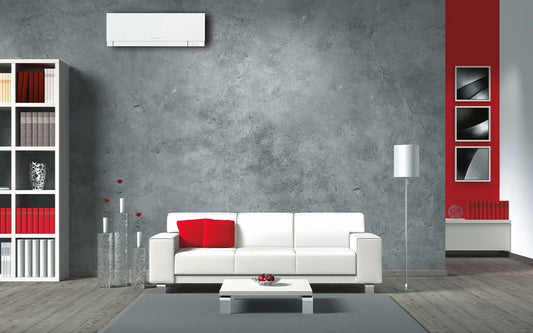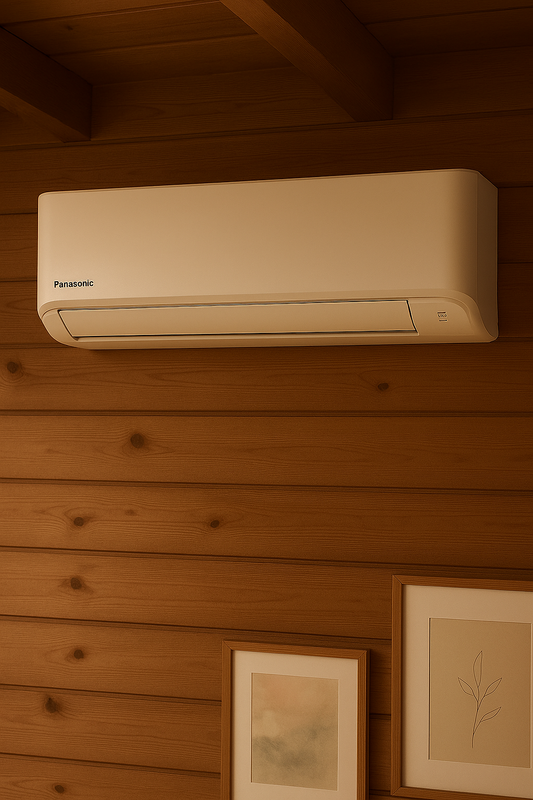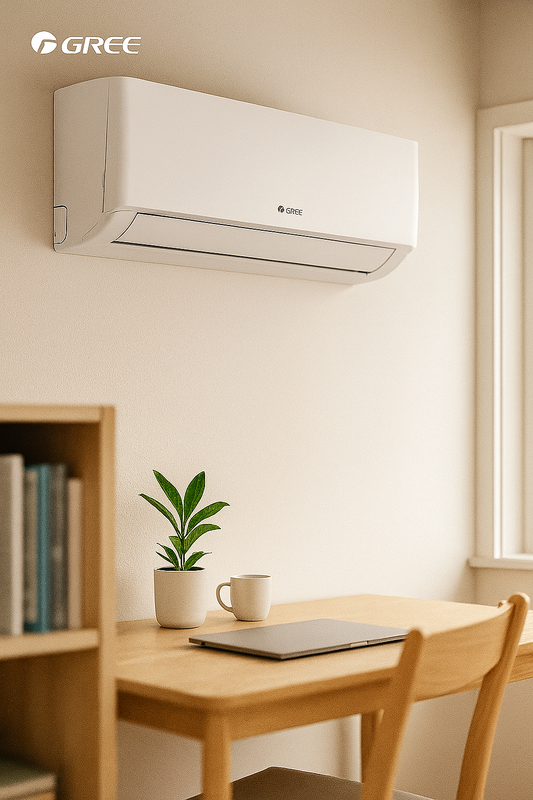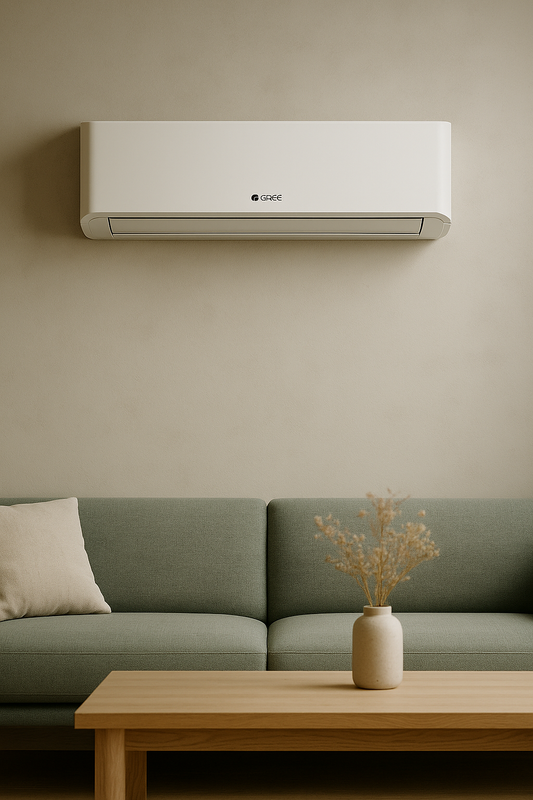ROT-avdrag – när lönar sig värmepumpen och hur snabbt får du tillbaka investeringen?
Att installera en värmepump och dra nytta av ROT-avdrag är ett sätt att spara pengar samtidigt som du investerar i en energieffektiv lösning för ditt hem. I denna artikel kommer vi att titta närmare på hur ROT-avdrag fungerar i samband med installation av värmepumpar, dess fördelar och hur snabbt du kan förvänta dig att återfå din investering.
Definition och bakgrund
ROT-avdrag står för "renovering, ombyggnad, tillbyggnad" och är en skattereduktion som syftar till att främja renovering och underhåll av bostäder. Genom ROT-avdraget kan privatpersoner få skattereduktion för arbetskostnaden när de anlitar en behörig hantverkare för att utföra renoverings- eller installationsarbete i hemmet. En värmepump är en energieffektiv uppvärmningslösning som kan dra nytta av detta avdrag.
Fördelar och användningsområden
Värmepumpar erbjuder många fördelar, inklusive lägre energikostnader, minskad miljöpåverkan och förbättrad inomhuskomfort. Genom att dra nytta av ROT-avdraget kan du minska kostnaderna för installationen av en värmepump och samtidigt öka värdet på din bostad. Värmepumpar är lämpliga för både uppvärmning och kylning av bostäder, vilket gör dem mångsidiga och passande för olika behov.
Relaterade tekniker, begrepp eller variationer
Det finns olika typer av värmepumpar, inklusive luft-vatten, jord-vatten och luft-luft värmepumpar. Varje typ har sina egna specifika egenskaper och lämpar sig för olika förhållanden. Det är viktigt att välja rätt typ av värmepump som passar ditt hem och dina behov bäst. Dessutom kan olika installerade tillbehör och system, såsom smarta styrningar och solfångare, komplettera värmepumpen för att ytterligare öka dess effektivitet.
Vanliga frågor (FAQ)
-
Hur mycket kan jag dra av i ROT-avdrag för installation av värmepump?
Du kan dra av 30% av arbetskostnaden för installation av värmepump, upp till ett tak på 50 000 kronor per person och år. -
Vilka krav måste uppfyllas för att få ROT-avdrag?
För att få ROT-avdrag måste du äga bostaden och vara skriven där. Arbetet måste utföras av en behörig hantverkare och betalas via banköverföring eller faktura. -
Hur snabbt kan jag förvänta mig att återfå min investering i en värmepump med ROT-avdrag?
Återbetalningstiden för en värmepump med ROT-avdrag varierar beroende på faktorer som energipriser och installationens kostnad. Generellt sett kan återbetalningstiden vara så kort som 3-7 år, med betydande besparingar på energikostnader.
Sammanfattning
Att dra nytta av ROT-avdrag för installation av en värmepump kan vara en lönsam investering för både din plånbok och miljön. Genom att minska energikostnaderna och öka värdet på din bostad kan en värmepump med ROT-avdrag ge dig långsiktiga fördelar. Det är viktigt att noggrant överväga dina behov och förutsättningar för att se om detta är rätt val för dig.
Installation Process
When it comes to installing a heat pump and utilizing the ROT deduction, the process involves several steps. Firstly, it is essential to assess the property to determine the most suitable type of heat pump. This evaluation includes factors such as the size of the property, insulation levels, and existing heating systems. Once the type of heat pump is selected, the installation process can commence. It typically involves the placement of the outdoor and indoor units, as well as the connection to the electrical and plumbing systems.
Environmental Impact
One of the key advantages of heat pumps, particularly when combined with the ROT deduction, is their positive environmental impact. By utilizing renewable energy sources, such as the heat from the ground or the air, heat pumps contribute to reducing carbon emissions and overall environmental footprint. This aligns with the broader push towards sustainable and eco-friendly living, making heat pumps a valuable addition to any property.
Case Study: Realizing Savings
Consider a hypothetical scenario where a homeowner opts to install a heat pump with the assistance of the ROT deduction. By doing so, they not only benefit from the initial tax reduction but also experience ongoing savings on their energy bills. Through careful monitoring of energy usage and cost comparisons, it becomes evident that the investment in a heat pump, supported by the ROT deduction, yields substantial financial advantages over time.
Integration with Smart Home Systems
Another aspect to consider is the integration of heat pumps with smart home systems. This can further enhance the efficiency and convenience of the heating and cooling processes. By incorporating features such as automated temperature controls and energy usage analytics, the benefits of heat pumps extend beyond mere cost savings to encompass a sophisticated and user-friendly home heating solution.
Energy Efficiency and Cost Savings
One of the primary reasons why heat pump installation with the support of the ROT deduction is advantageous is the significant energy efficiency and cost savings it offers. By harnessing renewable energy sources, heat pumps can deliver substantial reductions in heating and cooling expenses, contributing to long-term financial benefits for homeowners.
Regulatory Compliance and Professional Installation
It is crucial to emphasize the importance of adhering to regulatory requirements and engaging qualified professionals for the installation of heat pumps under the ROT deduction. Compliance with local building codes and industry standards, coupled with skilled installation, ensures the safety, performance, and longevity of the heat pump system.
Comparative Analysis: Heat Pump vs. Traditional Heating Systems
Conducting a comparative analysis between heat pumps and traditional heating systems can provide valuable insights into the advantages offered by heat pumps, particularly when integrated with the ROT deduction. By examining factors such as operating costs, environmental impact, and maintenance requirements, homeowners can make informed decisions regarding the most suitable heating solutions for their properties.
Utilization of Renewable Energy Sources
The utilization of renewable energy sources, inherent in the operation of heat pumps, aligns with the global shift towards sustainable energy practices. By incorporating heat pumps into residential properties through the facilitation of the ROT deduction, homeowners contribute to the promotion of clean energy and reduction of reliance on non-renewable resources.
Extended Benefits of Heat Pump Installation
It is worth noting that the benefits of heat pump installation extend beyond the immediate financial and environmental advantages. A well-maintained and efficiently functioning heat pump can enhance the overall value of the property, making it an attractive proposition for potential buyers or tenants. Additionally, the consistent and reliable heating and cooling provided by heat pumps contribute to a more comfortable and healthy indoor environment, further solidifying their appeal.
Maintenance and Longevity
Ensuring the ongoing efficiency and longevity of a heat pump system involves regular maintenance and care. With the support of the ROT deduction, homeowners can allocate funds towards periodic servicing and upkeep of the heat pump, thereby prolonging its operational lifespan and optimizing its performance. This proactive approach not only safeguards the investment made in the heat pump but also minimizes the likelihood of unexpected repair costs.
Regional Considerations and Climate Factors
When evaluating the suitability of heat pump installation in conjunction with the ROT deduction, it is essential to consider regional climate factors. The effectiveness of heat pumps can vary based on climatic conditions, and certain regions may offer more favorable circumstances for heat pump utilization. By factoring in these considerations, homeowners can make informed decisions regarding the potential benefits of integrating heat pumps into their properties.
Financial Planning and Return on Investment
While the immediate benefits of the ROT deduction for heat pump installation are evident, it is prudent for homeowners to engage in comprehensive financial planning to assess the long-term return on investment. By incorporating factors such as energy cost projections, potential property value appreciation, and ongoing maintenance expenses, individuals can gain a holistic understanding of the financial implications of integrating heat pumps with the support of the ROT deduction.
Technological Advancements and Innovation
The field of heat pump technology continues to evolve, presenting opportunities for enhanced efficiency and functionality. With ongoing advancements in heat pump design, control systems, and integration with renewable energy sources, homeowners stand to benefit from increasingly sophisticated and effective heat pump solutions. By leveraging the ROT deduction to embrace these technological innovations, individuals can position their properties at the forefront of energy-efficient and sustainable living.



